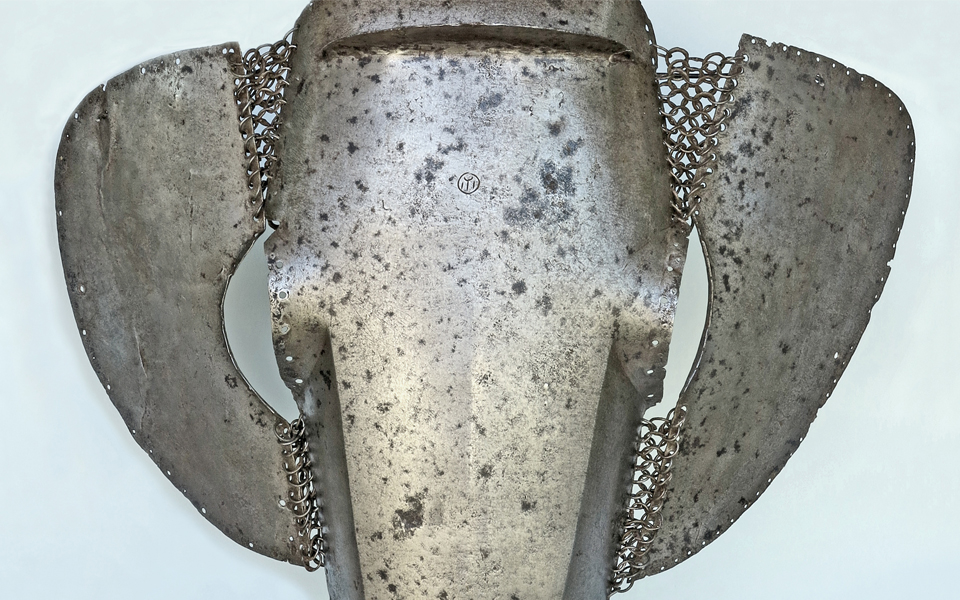
An Important Shaffron
This wonderful shaffron (from the French chamfrain) – the part of a horse’s armour protecting its head – perfectly documents the Turkish 16th century armour, made up of several metal plates connected one another by iron mails; a light and flexible defence derived from that used by the Islamic heavy cavalry.
The piece here presented consists of four elements: a central plate, two lateral ones and a small plate over the central one, all of them joined together by a thick mail of forged and individually riveted rings according to the medieval “barley grain” technique (grain d’orge).
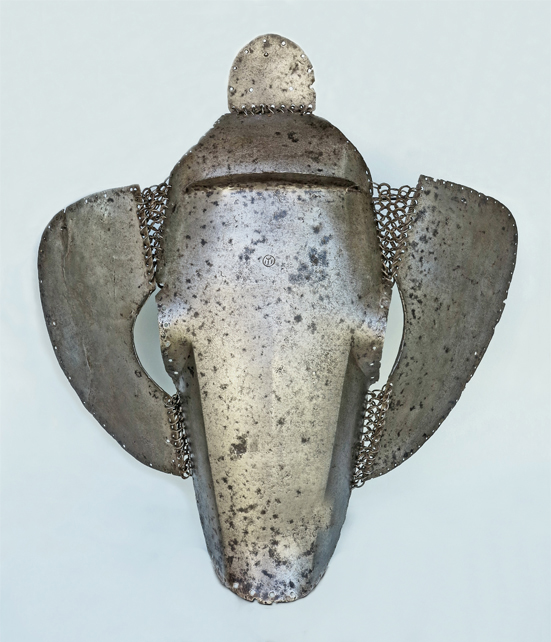
All the plates are perforated along the edges to fix a fabric lining inside, for the comfort of the horse head. The main plate which is shaped -as well as the two lateral ones- to allow the horse to see, has a small visor in the upper section. Under the visor it is clearly visible the Arsenal of St. Irene Hallmark – that is the one of the famous Costantinople armoury, located in a courtyard of the Topkapi Palace.
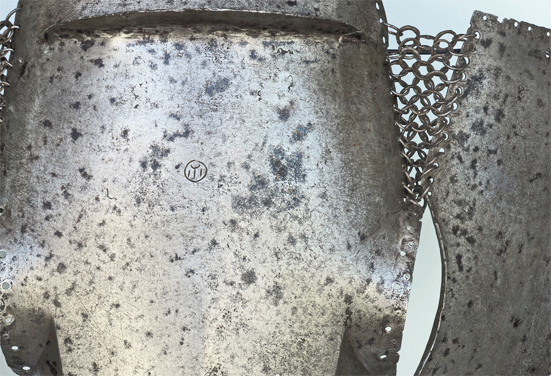
This rare mark, well-known to scholars, appears only on the arms and armours entering that armoury at the time of Sultan Selim (1512-1520), the father of Suleyman the Magnificent. The arsenal consisted of equipment for the great Ottoman army and booties from Egypt, Persia or Hungary (Grancsay 1986, p. 447).
The Byzantine church of St. Irene, was the first one commissioned by Constantine in the 4th century; after 1453 it became an arsenal, during the 18th century a Museum of Antiquities and from 1946 to 1978 a Museum of Arms.
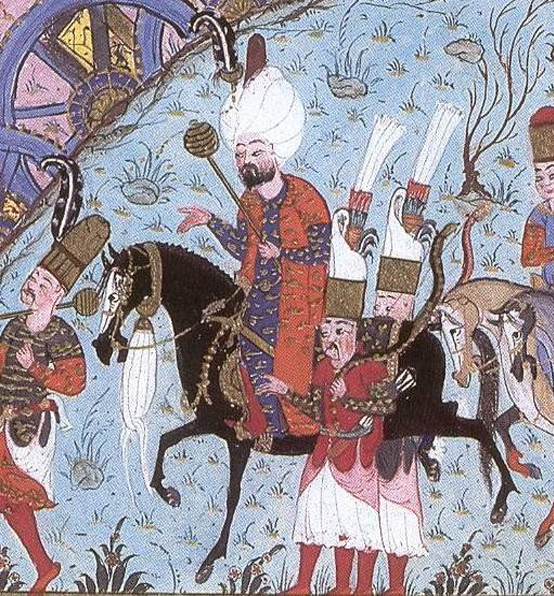
A shaffron very similar to the present one is nowadays preserved in the Topkapi Museum of Arms, another one belongs to the collections of the Metropolitan Museum in New York (inv. 36.25.506) and a third one is preserved in the Stibbert Museum in Florence (inv. 3514-3517), all three with the same hallmark.
Unlike most of the shaffrons known where only the central plate has been preserved, our example has all its original elements and this completeness undoubtedly makes the present piece a particularly rare one.
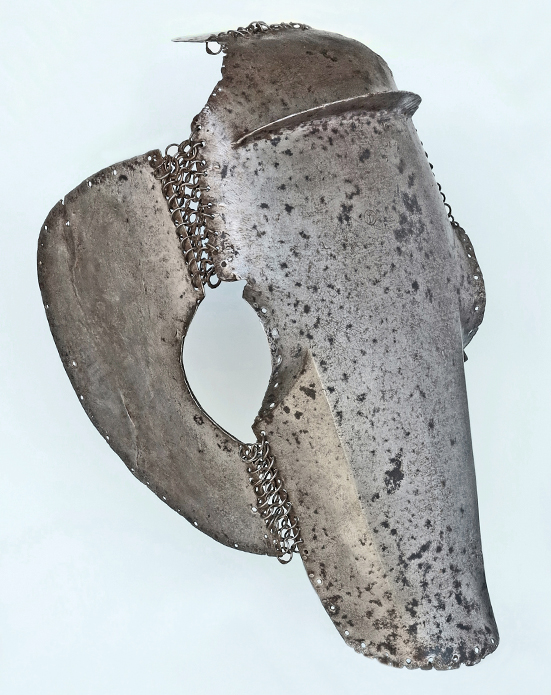
SHAFFRON
Steel
Turkey (Istanbul)
Early 16th century
Cm 44 x 44h
References: H. R. Robinson, Il Museo Stibbert, Milano 1967, vol I, tav. 1-6, spec. Tav. 2; L’Armeria Reale di Torino, ed. by F. Mazzini, Varese 1983 pl. 363, p. 402-403; S. Grancsay, Arms and Armor: essays by Stephen V. Grancsay from the Metropolitan Museum of Art Bulletin, 1920-1964, New York 1986; H. Ricketts and Ph. Missillier, Splendeur des armes orientales, Paris 1988; T. Güçkıran, Askeri Müze At Zırhları Koleksiyonu, Istanbul 2009.
NO LONGER AVAILABLE
© 2013 – 2024 cesatiecesati.com | Please do not reproduce without our expressed written consent
Alessandro Cesati, Via San Giovanni sul Muro, 3 – 20121 Milano – P.IVA: IT06833070151